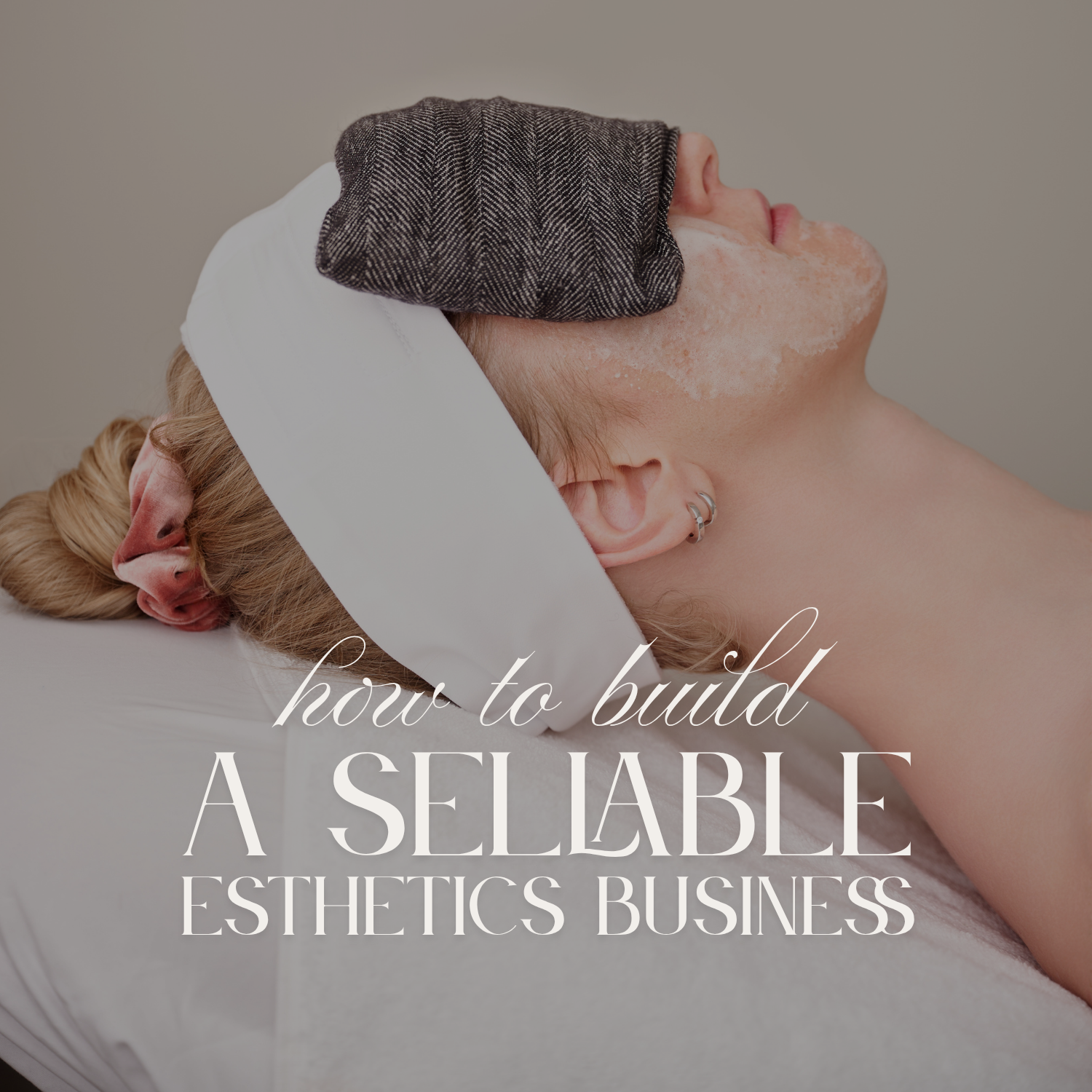As estheticians, we pour so much into our work—our energy, creativity, and care. We build deep relationships with clients, invest in our education, and create spaces that feel like an escape. But here’s something to think about, what happens when it’s time to step away?
Whether you're just starting out or have been running your studio for years, you have a business—and businesses have value. That means we may have the option to sell your business one day, but only if you've taken the right steps to prepare.
As estheticians, many of us never think about an exit strategy. We're often too busy with clients, updating our booking sites, managing retail, planning our marketing and of course, the loads of laundry that never cease to exist. But our business, no matter how small, is an asset. The sooner we start thinking about how to build it with future value in mind, the better.
An exit strategy is simply a plan for how you'll one day step away—whether that's retiring, selling, transitioning to a different role, or passing the business on to someone else. It's not about walking away tomorrow; it's about creating options for the future.
You might be thinking, “Who would want to buy my business?” The truth is buyers are looking for resilient, well-run businesses, even small solo practices. What they’re not looking for is something built entirely on the owner’s presence with no systems, brand, or repeatable value.
If you’ve built a loyal client base, have consistent revenue streams, and have created even basic systems to support operations—you’ve already started building value.
The Key Elements of a Sellable Esthetics Business
Here’s what makes a solo esthetics business more attractive to future investors or buyers:
-
Recurring revenue (e.g., loyal clients, retention, memberships, retail, packages)
-
Clear brand identity (clear and consistent expression of who you are, what you offer, and why it matters—reflected through your visuals, voice, values, and the experience clients have every time they interact with your business)
-
Systems that support operations without relying entirely on you (processes and tools in place so your business can run smoothly without you needing to manage every detail yourself. Think automation, admin assistant, and eventually a team)
-
Strong profit margins (earning significantly more than it spends, which is clearly reflected in your profit and loss (P+L) statement—showing healthy revenue, controlled expenses, and sustainable growth)
-
Opportunities to scale (having the ability to grow—whether by adding new service providers, expanding treatment offerings, increasing retail sales, or opening additional locations—without compromising quality or burning out)
Even if you’re not ready to sell, understanding these factors can help you make smarter business decisions now.
Your business holds value beyond the treatment room, and with the right foundation, it can become a sellable, scalable asset. To dive deeper into what this really means, tune into my conversation with Chris Hubble, Founder of LuxMed Transition Strategies, on The Solo Edit podcast. I think you'll walk away with a new perspective—and a clearer vision for what’s possible.



